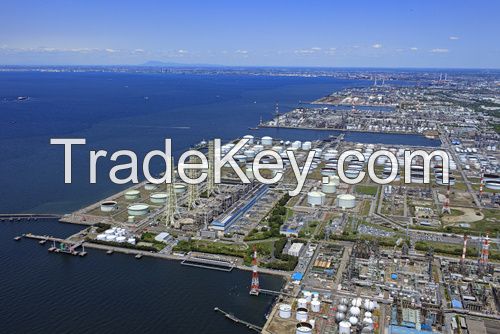
FOB Price
أحصل على آخر سعر|
Minimum Order
Place of Origin:
-
Price for Minimum Order:
-
Minimum Order Quantity:
-
Packaging Detail:
-
Delivery Time:
-
Supplying Ability:
-
Payment Type:
-
The terms Bitumen and Asphalt are mostly interchangeable
Bitumen is a black or dark-colored (solid, semi-solid, viscous), amorphous, cementitious material that can be found in different forms, such us rock asphalt, natural bitumen, tar and bitumen derived from oil, which is referred to as petroleum bitumen.
In order to specify the components of bitumen different methods are used and in most of these methods bitumen solved in sulfur carbon is divided in three major parts:
Carbon: the part which is insoluble in tetra chloride
carbon
Asphaltine : insoluble part in solvents such as light aliphatic
hydrocarbons such as ether
Malton: solved part in light aliphatic hydrocarbons such as
heptane. Maltons are divided into two minor groups, resins and
oils, and while resin materials are brown and semi hard, they
provide bitumen flexibility and adhesiveness. Heavy oils make
bitumen soft, the more its amount the softer bitumen will be.
A DEFINITION OF VISCOSITY in Bitumen Explained:
VISCOSITY can be defined as, the property of a fluid which enables it to resist flow.
So the more VISCOUS a BINDER is the more it will resist flow and conversely the less VISCOUS a BINDER is, the less it will resist flow.
VISCOSITY can also be a numerical measure of the above property,
E.g. what is the VISCOSITY of a conventional hot rolled asphalt wearing course binder ?
Answer, it is *0pen.
BITUMEN DENSITY Explained:
The density of bitumen is approx. 1 tonne per cubic metre at *0 deg.C., i.e. about the same as water, but bitumen expands when it is hot as with most materials, so if you are purchasing in litres be sure you know at what temperature the litres are being measured.
1 tonne of cutback bitumen or bitumen emulsion used in surface dressing if sprayed at 1mm. thickness will give ***0 sq.metres,
i.e. 1kg. of bitumen gives a 1mm. covering over 1 sq.metre.
In the world more than seven kinds of bitumen are produced which depends on climate and region conditions , but in Iran bitumen production is limited to two kinds due to high expenses.
At present *5/ **0 bitumen with high penetration and *0 /*0 with less penetration is produced. According to this classification in cold places *5/**0 and in warm places *0/*0 bitumen are used.
The bitumen flexibility makes asphalts lose their resistance in cold and hot climates. In desert regions, cold nights make asphalt contract and the warmth of its days separates its components and the asphalt breaks.
Currently most of the roads globally are paved with bitumen. Today the worlds demand for bitumen accounts for more than **0 million tons per year which is approximately **0 million barrels of bitumen consumed annually.
Known for its adhesive and cohesive assets, bitumen is mostly utilised in the construction industry. Bitumen is applied on road paving because it is viscous when hot, but solid once it cools down.
Therefore Bitumen operates as the binder/glue for pieces of the aggregate. Bitumen is applied in construction and maintenance of: Highways, Airport runways, Footways and many other applications In order realize the complexity of bitumen as a product an in-depth knowledge and detailed understanding for one of the way the roads are built is crucial.
Specialists in bitumen know bitumen as an advanced and complex construction material, not as a mere by-product of the oil refining process. The ultimate paving material (also referred to hot mix asphalt concrete HMAC or HMA) consists of about *3 *7% mineral aggregate (stone), sand and filler. The remaining percentage is bitumen.
Petroleum bitumen is typically referred to as bitumen or asphalt. In Europe for instance bitumen means the liquid binder. In North America, on the other hand the liquid binder is referred to as asphalt, or asphalt cement. OriginIn general the term bituminous materials is used to denote substances in which bitumen is present or from which it can be derived.
Bituminous substances comprise of primarily bitumens and tars. Bitumen occurs in nature in several forms: hard one easily crumbled bitumen in rock asphalt and softer, more viscous material which is present in tar sands and asphalt lakes. Another way in which bitumen can be obtained is through petroleum processing in this manner the bitumen is essentially the residue yielded through a distillation process of petroleum.
Although bitumen can be found in natural form, the world currently relies for all purposes on petroleum. The material has been produced in this way for over a hundred years. Tars on the other hand do occur in nature. Tars derive as condensates from the processing of coal (at very high temperatures), petroleum, oil-shale, wood or other organic materials. Pitch is produced when a tar is partially distilled so that the volatile components have evaporated.
